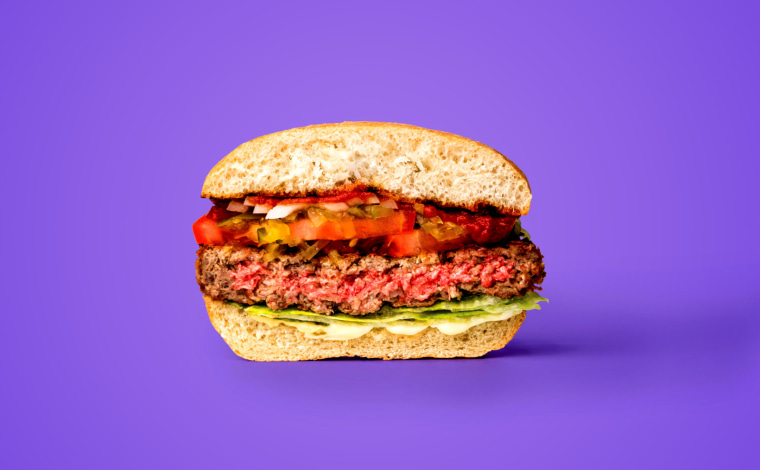Plant-based meat alternatives continue to appeal to American diners, according to a new study from market research firm The NPD Group. Sales have risen from $118.7 million in 2017 to $192.1 million this year — and our national obsession with hamburgers is playing a big role.
The most visible factor in this growth is the rise of cutting-edge, plant-based meat alternatives such as Beyond Meat and the Impossible Burger, which are redefining the concept of a traditional veggie burger. “Meat alternative providers, particularly in the burger plant-based category, have done a good job on the taste front and in making vegetables reproduce the meat-eating experience,” said NPD analyst Darren Seifer.
NPD found that plant-based hamburgers are largely responsible for the increase in Americans’ consumption of plant-based proteins at restaurants, with nearly 80 percent of that growth coming from Impossible Burger and Beyond Meat. Aside from burgers, sales of plant-based versions of wings, sausage and meatballs have risen by double digits over the past year — and sales of plant-based Italian sausage have skyrocketed by 416 percent in that time.
NPD found that 16 percent of Americans say they “regularly” use plant-based alternatives to meat and dairy products, such as almond milk and meat substitutes. More unexpected, though, is that 89 percent of the people eating all of these tell NPD that they’re not vegetarian or vegan — they just like variety in their diets.
“Consumers like having the option of mixing plant-based dairy and meat alternatives with dairy and meat consumption,” Seifer said. “Plant-based food consumption is not about rejecting traditional protein sources, it’s about having options.”
Millennials and younger consumers are the ones driving the demand for many of these products, but they’re not the only ones eating them. “Since the core consumer groups for plant-based dairy and meat alternatives are younger, NPD forecasts that plant-based foods, to varying degrees, do have staying power,” he said.
NPD found that Gen Xers are more likely to adopt these products as they age and make health considerations more of a priority when choosing foods. Overall, NPD found that about 20 percent of people say they use what they eat and drink to help manage a health condition.
This trend also dovetails with the years-long embrace of more high-protein diets and eating plans. NPD found that 61 percent of Americans say they want more protein in their diets, and Seifer said many perceive plant-based proteins, even when they go through multiple steps to resemble, say, ground beef, are perceived as being better for you.
“Consumers aren’t seeing plant-based proteins as processed. They perceive them as having a healthier profile than meat and not overly processed,” he said.
Given the relative dearth of diners who embrace an all-vegetarian or vegan lifestyle, though, Seifer said taste will continue to be the key component that determines whether a plant-based alternative to a pantry or fridge staple succeeds or fails.
“Attributes such as health and convenience go far to drive consumption, but if the flavor profile falls below consumers’ expectations, then the product will likely have a short run,” he said. “Now there is no compromise when choosing a vegetable-based burger in terms of taste.”
